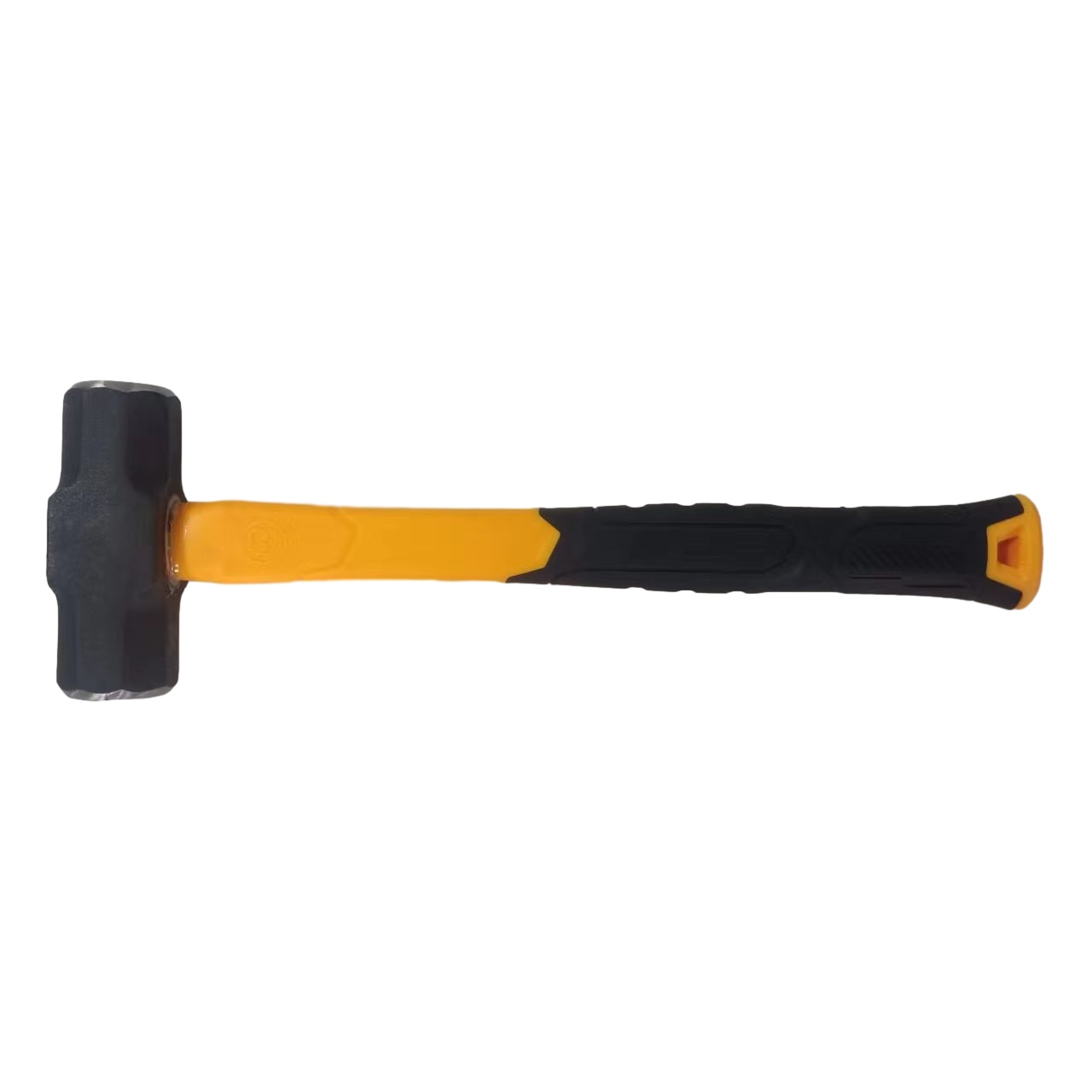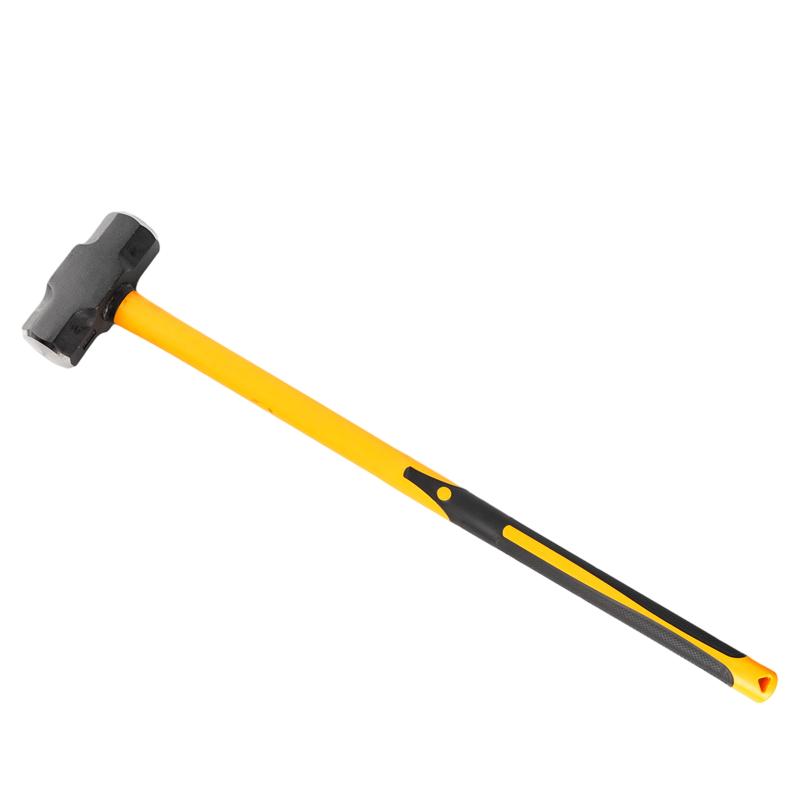When it comes to brute strength and raw power, few tools match the might of a sledgehammer. More than just a hammer, a sledgehammer is a force multiplier, capable of delivering devastating blows for demolition, splitting, and heavy construction. But with various sizes and weights available, how do you choose the right sledge hammer weight for your needs? This article will guide you through the world of sledgehammers, exploring their different weights, uses, and even how to incorporate sledgehammer training into your fitness routine. Understanding the nuances of a sledge isn't just about picking up the heaviest one; it’s about finding the perfect balance of power and control.
What is a Sledgehammer and How Does it Differ from a Regular Hammer?
At its core, a hammer is a hand tool designed to deliver a concentrated impact. Think of it as a weighted head attached to a handle length. A sledgehammer, however, is essentially a supercharged hammer. The most significant difference lies in the weight of the hammer head and the length of the handle length. While a standard hammer might be comfortable to wield one handed, a sledgehammer typically requires two hands due to its substantial heavier weight. This heavier weight, combined with the longer handle length, generates significantly more momentum and swinging power than a regular hammer. Imagine the difference between tapping a nail gently and the earth-shattering impact of a sledgehammer hitting steel. That difference is the essence of what sets a sledge apart.
The primary function of a sledgehammer is to deliver a powerful blow over a larger area. Unlike a hammer used for precision tasks, a sledge is a pounder, designed for heavy-duty applications. While you might use a hammer for basic woodworking, a sledgehammer is your go-to tool for breaking rocks, driving steel, or performing light demolition. The sheer mass times velocity of a swinging sledgehammer makes it an indispensable tool for tasks where brute force is required.
Decoding Sledge Hammer Weight: What Options Are Available?
When you start looking at sledgehammers, you'll quickly realize they come in a range of weights. The sledge hammer weight is a crucial factor determining its application and the amount of force it can deliver. Common sledgehammer weights range from around 4lb for lighter tasks up to 20lb or even more for the most demanding jobs. You'll often see sledgehammers in weights like 8lb, 10lb, 12 pound, 16 pound, and the hefty 20 pound hammer.
The sweet spot for many general-purpose sledgehammers tends to be in the 10 and 20 pound range. A 10 pound sledge hammer offers a good balance of power and manageability for various tasks. On the other hand, a 20 pounder is reserved for situations where maximum impact is necessary. It's important to remember that the sledge hammer weight directly influences the swinging force, so choosing the right weight is critical for both effectiveness and safety. You don't want a sledgehammer so heavy that you can't control it, or so light enough that it doesn't get the job done.
Sledgehammer Weight for Different Tasks: From Demolition to Fine Detail.
The task at hand should heavily influence your choice of sledgehammer weight. For light demolition work, such as breaking up small concrete pieces or dislodging stuck objects, a lighter sledgehammer in the 4lb to 8lbs range might be sufficient. These lighter sledgehammers are easier to control and swing for extended periods without excessive fatigue. If you're primarily splitting wood for firewood, an 8 pound sledge or a maul around the same weight is often a good starting point.
For more demanding tasks like driving fence posts or driving stakes, a heavier hammer in the 10 pound to 12 pound range provides the necessary force. When it comes to serious heavy-duty work, such as breaking rocks or tackling substantial demolition, you'll likely need a heavier sledge, such as a 16 pound or even a 20 pound hammer. Remember, the goal is to use a sledgehammer that is heavy enough to do the job efficiently without being so really heavy that it compromises your control and safety.
The Power of the Swing: Why Swinging a Sledgehammer is a Full-Body Workout.

Beyond its utility as a powerful tool, swinging a sledgehammer is an incredibly effective full-body workout. It engages muscles throughout your entire body, from your legs and core to your shoulders and arms. Each swing requires a coordinated effort, making it a fantastic way to build strength and build power. Unlike isolated exercises, swinging a sledgehammer is a dynamic movement that mimics real-world activities, making it functional and engaging.
Think about the mechanics of swinging a sledgehammer. You're using your legs to generate power, your core to stabilize, and your arms and back to control the swing. This compound movement recruits multiple muscle groups simultaneously, leading to significant calorie burn and muscle development. Even swinging a sledgehammer against a large tire can provide a challenging and rewarding workout. It remains one of my favorite unconventional training methods.
Getting Started with Sledgehammer Training: Safety and Technique First.
Before you start swinging a sledgehammer with gusto, it's crucial to prioritize safety and proper technique. Start with a lighter sledge, such as a 10 pounder or even an 8lb, especially if you're new to this type of training. Ensure you have a clear and open space, free from obstructions and bystanders. Proper footwear and gloves are essential for grip and protection.
Focus on your form. Your swing should originate from your core and legs, not just your arms. Keep your back straight and engage your abdominal muscles throughout the movement. Start with controlled swings and gradually increase the power as you become more comfortable. Remember, it's not about how hard you can swing a sledge initially, but about consistent and controlled movements. Don’t be fooled to believe that more is always better, especially when starting out.
Exercises for Sledgehammer Training: More Than Just Swinging.
While swinging a sledgehammer at a tire is a classic exercise, there are other variations you can incorporate into your sledgehammer training routine. Swinging the sledgehammer in different planes of motion can target various muscle groups. For example, you can perform diagonal swings, overhead swings, or even side swings.
Another effective exercise involves using the sledgehammer to drive a heavy-duty mattock or another sturdy object into the ground. This not only builds strength but also improves your accuracy and control. You can also incorporate sledgehammer carries, holding the sledge at arm's length or across your shoulders to enhance core stability and grip strength. Get creative and explore different ways to challenge yourself with the sledge.
Is a Heavier Sledgehammer Always Better for Training? Considering Sledgehammer Weight in Fitness.
When it comes to sledgehammer training, the temptation might be to immediately grab the heaviest sledgehammer you can find. However, a heavier weight isn't always better, especially for training purposes. Using a sledgehammer that is too heavy can compromise your form, increase the user's risk of injury, and ultimately hinder your progress.
For sledgehammer training, it's often more beneficial to use a lighter sledge that allows you to maintain good form and perform more repetitions. This approach emphasizes endurance and power development rather than just brute strength. A 10 pounder or 12 pounder sledgehammer is often a good starting point for many individuals. As you get stronger and more proficient, you can gradually increase the sledgehammer weight. The goal is to challenge yourself without sacrificing technique.
Incorporating Sledgehammer Workouts: Tips and Considerations.
Integrating sledgehammer workouts into your routine can add a unique and effective dimension to your fitness. Start by incorporating swinging a sledgehammer for a set number of repetitions or a specific time swinging. You can use a timer to track your work intervals. Aim for 100 swings or more per session, depending on your fitness level and the weight of the hammer.
Consider using a large tire as your target. This provides a safe and effective way to absorb the impact of the sledgehammer. Vary your stance and swinging patterns to engage different muscle groups. Remember to listen to your body and don't push yourself too hard, especially when starting out. Sledgehammer training can be demanding, so allow for adequate rest and recovery between sessions. You'll find that consistent time swinging a sledge will wear you out in a good way!
Final Thoughts on Choosing the Right Sledgehammer Weight for Your Needs.

Choosing the right sledgehammer weight is a personal decision that depends on your intended use and strength level. For general-purpose tasks and light demolition, a 10 pound or 12 pound sledgehammer offers a good balance of power and manageability. For heavy-duty work, you might need a heavier one, such as a 16 pound or 20lb model. For sledgehammer training, starting with a lighter sledge that allows for good form is generally recommended.
Ultimately, the best tool is the one that allows you to perform the task safely and effectively. Consider the types of projects you'll be tackling and your current fitness level to make an informed decision. Whether you want a hammer for splitting firewood, driving fence posts, or to build strength, understanding sledgehammer weight is the first step towards harnessing the power of this iconic tool.
Follow Ross and Never Gymless: Inspiration for Your Sledge Journey (Books and DVDs, Apparel, Resistance Bands).
For those seeking inspiration and further guidance on unconventional training methods, including sledgehammer workouts, follow ross and his never gymless philosophy. His approach emphasizes functional fitness using readily available tools and your own bodyweight. While this article focuses on sledgehammer weight, resources like books and dvds, apparel designed for rugged workouts, and even tools like resistance bands can complement your sledgehammer training and provide a holistic approach to building body strength and power. Explore these resources to enhance your fitness journey and discover new ways to challenge yourself.
Key Things to Remember About Sledgehammers:
- Sledgehammers are heavier and more powerful than regular hammers.
- Sledgehammer weights range from 4lb to 20lb or more.
- Choose the sledgehammer weight based on the task at hand.
- Swinging a sledgehammer is an excellent full-body workout.
- Prioritize safety and proper technique in sledgehammer training.
- Start with a lighter sledge for training and gradually increase the heavier weight as you get stronger.
- Incorporate varied exercises into your sledgehammer training routine.
- Listen to your body and allow for adequate rest.
- Consider resources like follow ross and never gymless for workout inspiration.
By understanding the nuances of sledgehammer weight and embracing the power of the swing, you can effectively utilize this tool for both practical tasks and building incredible strength. So, choose your sledge wisely and get ready to unleash your inner pounder!
Post time: 01-03-2025





